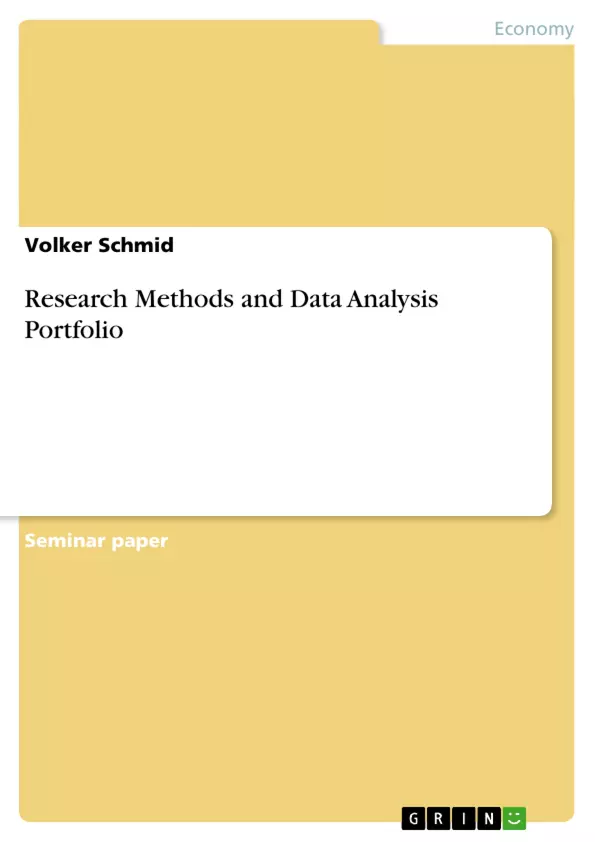“Over the past few years, the Employee Credit Union (ECU) has accumulated a large amount of surplus funds, which have been invested in certificates of deposit. It has also experienced a lower loan/share ratio then other credit unions of similar size. Because of these factors, the credit union’s average earnings on its investments have slowly declined and its profit margins have been squeezed” (Portfolio Assessment, 2004).
The market place of a company changes every few years, and therefore, it needs to be researched and analysed (Kotler, 2001). The ECU decided to conduct a research project to determine how the credit union can solve its problem. The aim of this paper is to:
• Evaluate the research objectives.
• Evaluate the research design in light of the stated research objectives.
• Use SPSS to obtain simple frequencies for the answers to each question.
• Use SPSS to perform appropriate cross-tabulations.
• Use SPSS to perform appropriate univariate and bivariate statistical tests after developing hypotheses for these particular tests.
The analysis discovers several weaknesses of the research process used by the credit union. Furthermore, many mistakes are found in the research design. The analysis of the survey identifies the strengths and weaknesses of the credit union, which can partly answer the research objectives. The main strengths of the union are its helpful employees, their ability to treat information confidentially, their prompt processing of loan applications, and the way the credit union is managed and operated. Identified weaknesses are the level of the loan rates, the usefulness of their services, and problems associated with the loan application form.
Inhaltsverzeichnis (Table of Contents)
- First Stage of the Research Process
- Problem Definition
- Type of Research
- Research Objectives
- Research Design
- Questionnaire Design
- Questionnaire Layout
- Sampling
- Fieldwork
- SPSS Analysis
- Frequencies
- Cross-Tabulations and Chi-Square Test
- Conclusion
Zielsetzung und Themenschwerpunkte (Objectives and Key Themes)
The objective of this paper is to evaluate the research objectives and design used by an Employee Credit Union (ECU) to address its surplus funds and low loan/share ratio. The analysis aims to determine the strengths and weaknesses of the ECU's research process and provide insights into its performance.
- Evaluating the research objectives and design
- Analyzing the research process used by the credit union
- Identifying the strengths and weaknesses of the credit union
- Exploring factors contributing to the ECU's surplus funds and low loan/share ratio
- Examining the effectiveness of the credit union's services in meeting member needs
Zusammenfassung der Kapitel (Chapter Summaries)
The first chapter focuses on the initial stages of the research process, including defining the research problem, determining the type of research, and outlining the research objectives. Chapter 2 delves into the research design, outlining the methodology and approach taken in the study. Chapter 3 examines the questionnaire design, including its layout and structure. The sampling strategy employed in the research is discussed in Chapter 4. Chapter 5 provides an overview of the fieldwork conducted, while Chapter 6 focuses on the analysis of data using SPSS, including frequencies, cross-tabulations, and chi-square tests.
Schlüsselwörter (Keywords)
Employee Credit Union, research objectives, research design, questionnaire design, sampling, SPSS analysis, frequencies, cross-tabulations, chi-square test, loan/share ratio, surplus funds, credit union services, member needs.
- Quote paper
- Volker Schmid (Author), 2005, Research Methods and Data Analysis Portfolio, Munich, GRIN Verlag, https://www.grin.com/document/38124



